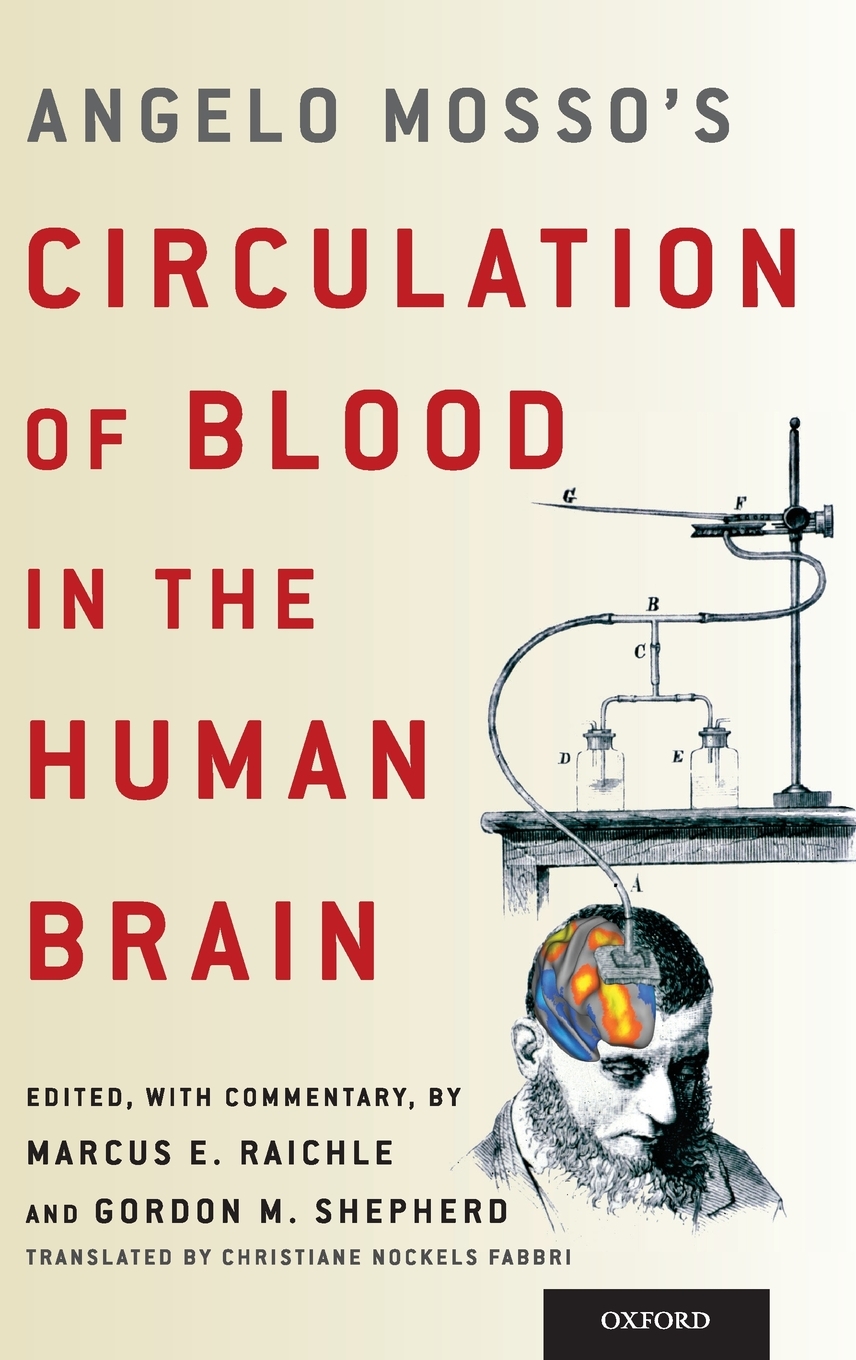 |
Angelo Mosso's Circulation of Blood in the Human Brain
Edited by Marcus E. Raichle & Gordon M. Shepherd
Oxford University Press, 2014
ISBN: 978-0-19-935898-4 |
That blood circulation can dynamically change in the brain is somewhat taken for granted today, and this phenomenon certainly forms the theoretical and practical framework of functional magnetic resonance imaging (fMRI), so useful to study brain activity in real-time. However, students should never forget that what today might be "common knowledge" was not always so. This monograph, originally published in Italian in 1879 and 1880 and translated into German in 1881 (with the English translation coming in 2014) offers an in depth look at some of the first observations that showed how blood circulation in the brain could measurably vary with mental exertion. The author wonderfully prepares us to follow his studies by first providing us with: 1) a thorough historical introduction, 2) a clinical presentation of the human test subjects, 3) an overview of the equipment use to gather his measurements and 4) a detailed description of the pulse tracings that serve as the raw data displayed throughout the monograph.
Although of mostly historical value at this point, here you will find a wonderful first person account of the observations, experiments and analyses made by Angelo Mosso to prove that the blood vessels in the brain (and other anatomical regions) can effectively regulate blood flow to reflect the organ's changing needs. It is refreshing to read such a candid and personal view of science, which not only includes the author's logical flow of ideas, but also his failures, as well as personal critiques to some of his fellow colleagues when his findings contradicted established ideas. Most definitely a very different way to communicate science, but one that better shows students the fuzzy path of discovery. A final word of caution though: the reader must be ready to accept the liberal use of dogs and humans in ways that today would appear inappropriate. The late 19th century did not have internal review boards or animal research committees to oversee the use of test subjects.
